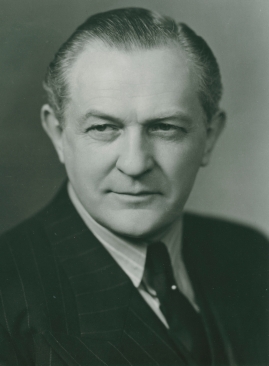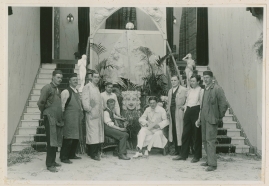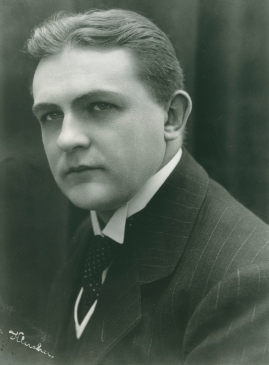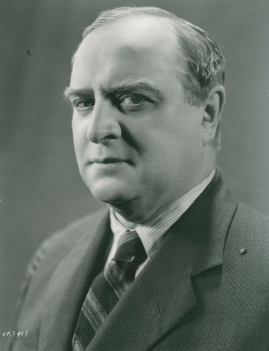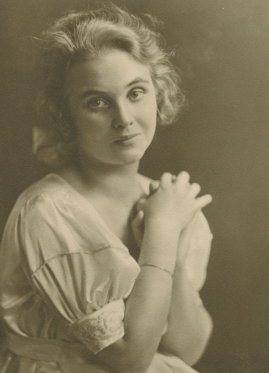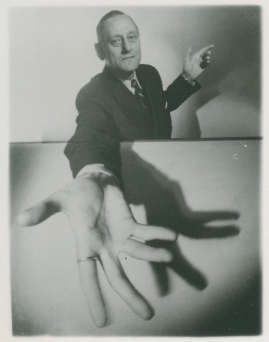Georg af Klercker
Table of contents
- Basic facts
- Links and resources
- Biography
- Awards
- Films
- Original work
- Soundtrack listing
- Groups
Basic facts
Media (3)
| Director | |
|---|---|
| Cast |
|
| Show all films | |
| Awards |
|
Biography
Swedish director and actor. Born as Ernst Georg af Klercker i Kristianstad. Died in Malmö. Lieutenant at Svea livgarde 1903. Started working for the stage in 1907. Marriage 1905 with Tyra Zelina Sundqvist, 1911 with the actress Selma Wiklund and in 1930 with Vera Boman.-In 1912 the French screenwriter and director Paul Garbagni was in Sweden shooting The Springtime of Life (I lifvets vår). What distinguishes this film is that the male leads were played by Victor Sjöström, Mauritz Stiller and Georg af Klercker, the three filmmakers who a few...
Biography
Swedish director and actor. Born as Ernst Georg af Klercker i Kristianstad. Died in Malmö. Lieutenant at Svea livgarde 1903. Started working for the stage in 1907. Marriage 1905 with Tyra Zelina Sundqvist, 1911 with the actress Selma Wiklund and in 1930 with Vera Boman.
-
In 1912 the French screenwriter and director Paul Garbagni was in Sweden shooting The Springtime of Life (I lifvets vår). What distinguishes this film is that the male leads were played by Victor Sjöström, Mauritz Stiller and Georg af Klercker, the three filmmakers who a few years later would form the backbone of the phenomenon known as the Golden Age of Swedish cinema. For various reasons, one being that he worked in Göteborg for Hasselblad and not for Svenska Bio in Stockholm like the others, af Klercker soon fell by the wayside. He also stopped making films in 1918, roughly the same time that Stiller and Sjöström achieved international fame. Yet af Klercker has been re-evaluated in recent years, largely thanks to a retrospective at the 1986 Pordenone film festival. In 1992 he was honoured by Ingmar Bergman who awarded him the Ingmar Bergman Prize posthumously. Soon afterwards Bergman's newly written one act play "The Last Gasp" ("Sista skriket") was staged at Cinemateket in Stockholm starring Björn Granath and Ingvar Kjellson. The play presents an imaginary meeting between af Klercker and the influential director of Svenska Bio, Charles Magnusson.
Georg af Klercker was at the height of his powers as a director between 1915 and 1917, when he was especially active. In 1916 alone he made 14 films, a workload that probably contributed to the nervous breakdown he had at the end of that year. The next year he confined himself to a 'mere' 9 films, ending his career as a director in 1918. In 1926 he tried, somewhat unsuccessfully, to make a comeback with Flickorna på Solvik ('The Girls at Solvik').
Often melodramas or adventures, what characterises af Klerckers films is the richness of their mise en scène. Thanks to the cutting edge photographic equipment that Hasselblad were able to provide, af Klercker's scenography was highly ingenious. Lavish and vivacious, a great deal of attention has been paid to what is seen on camera, such as the costumes and sets, developed to the full through the skilful use of deep focus. The use of mirrors to broaden the space and image is also characteristic of af Klercker. In a review of Fången på Karlstens fästning ('The Prisoner of the Karlsten Fortress", 1916), Svenska Dagbladet wrote: "One could hardly wish for more brilliant decorations than these natural pictures. The lighting effects are also first class, and show that we [Swedes] can also work with limited yet sensitively used resources." This is a judgement which has stood the test of time. The cameraman for the film was Gösta Stäring. Otherwise the cinematography for many of af Klercker's films was by Carl Gustaf Florin, including Victory of Love (Kärleken segrar, 1916) and In the Fetters of Darkness (I mörkrets bojor, 1917). The director himself usually wrote the screenplay. He experimented with complex narrative styles, sometimes with parallel time levels, and he often made use of flashbacks and dream sequences.
A lack of specific research makes it hard to say anything concrete about af Klercker's influence on Swedish cinema. Yet it is probably sufficient to note that during the few years he was active he made a series of visually and emotionally impressive films, which provide a rich source of material for those interested both in Swedish silent films and the European influences on them.
Fredrik Gustafsson (2011)
(translated by Derek Jones)
Awards
| The Ingmar Bergman Award | Stockholm | 1992 | (postumt) |
|---|
